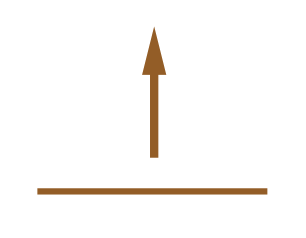








Le théorème de Gauss nous dit que :
$$ \forall (a, b, c) \in \hspace{0.05em} \mathbb{Z}^3, $$
$$ a / bc \enspace et \enspace a \wedge b = 1 \hspace{0.2em} \Longrightarrow \hspace{0.2em} a/c \qquad (Gauss) $$
Corollaire du théorème de Gauss
Le corollaire du théorème de Gauss nous dit que :
$$ \forall (a, b, c) \in \hspace{0.05em} \mathbb{Z}^3, $$
$$ a / c \enspace et \enspace b / c, \enspace avec \enspace a \wedge b = 1 \hspace{0.2em} \Longrightarrow \hspace{0.2em} ab/c \qquad \bigl(Gauss \enspace (corollaire)\bigr) $$
Soit \((a, b, c) \in \hspace{0.05em} \mathbb{Z}^3\) trois entiers relatifs.
Prenons pour hypothèse que \( a / bc \) et que \( a \) et \( b \) sont premiers entre eux.
Si : \(\Biggl \{ \begin{gather*} a / bc \\ a \wedge b = 1 \end{gather*}\)
Par le théorème de Bézout, on sait que :
$$ \forall (a, b) \in \hspace{0.05em}\mathbb{Z}^2, $$
$$ a \wedge b = 1 \Longleftrightarrow \exists (u, v) \in \hspace{0.05em}\mathbb{Z}^2, \enspace au + bv = 1 $$
Alors,
$$ \exists (k, u, v) \in \hspace{0.05em} \mathbb{Z}^3, \Biggl \{ \begin{gather*} bc = ka \qquad (1) \\ au + bv = 1 \qquad (2) \end{gather*} $$
Avec \( (2) \), on a :
$$ au + bv = 1$$
$$ acu + bcv = c $$
Or, grâce à \( (1) \), on sait que \( bc = ka \), soit :
$$ acu + kav = c $$
$$ a \underbrace{(cu + kv)} _\text{\( \in \hspace{0.05em}\mathbb{Z} \)} = c $$
On a alors \( a / c \).
Soit finalement,
$$ \forall (a, b, c) \in \hspace{0.05em} \mathbb{Z}^3, $$
$$ a / bc \enspace et \enspace a \wedge b = 1 \hspace{0.2em} \Longrightarrow \hspace{0.2em} a/c \qquad (Gauss) $$
Soit \((a, b, c) \in \hspace{0.05em} \mathbb{Z}^3\) trois entiers relatifs.
Prenons pour hypothèse que \( a / c \), \( b / c \) et que \( a \) et \( b \) sont premiers entre eux.
Si : \( \Biggl \{ \begin{gather*} a / c \\ b / c \end{gather*}\)
Alors,
$$ \exists (k, k') \in \hspace{0.05em}\mathbb{Z}^2, \Biggl \{ \begin{gather*} c = ka \qquad (1) \\ c = k'b \qquad (2) \end{gather*} $$
Alors, de \( (1) \) et \( (2) \) on tire que :
$$ ka = k'b $$
On alors \( b/ak \), mais \( a \wedge b = 1 \).
Or, par le théorème de Gauss, on a vu plus haut que :
$$ \forall (a, b, c) \in \hspace{0.05em} \mathbb{Z}^3, \enspace a / bc \enspace et \enspace a \wedge b = 1 \hspace{0.2em} \Longrightarrow \hspace{0.2em} a/c $$
D'où l'on peut en conclure que \( b/k \), soit que :
$$ \exists K \in \mathbb{Z}, \enspace k = Kb $$
Mais \( c = ka \), soit,
$$ c = Kba $$
On s'aperçoit finalement que \( ab / c \).
Soit finalement,
$$ \forall (a, b, c) \in \hspace{0.05em} \mathbb{Z}^3, $$
$$ a / c \enspace et \enspace b / c, \enspace avec \enspace a \wedge b = 1 \hspace{0.2em} \Longrightarrow \hspace{0.2em} ab/c \qquad \bigl(Gauss \enspace (corollaire)\bigr) $$
 Retour en haut de page
Retour en haut de page